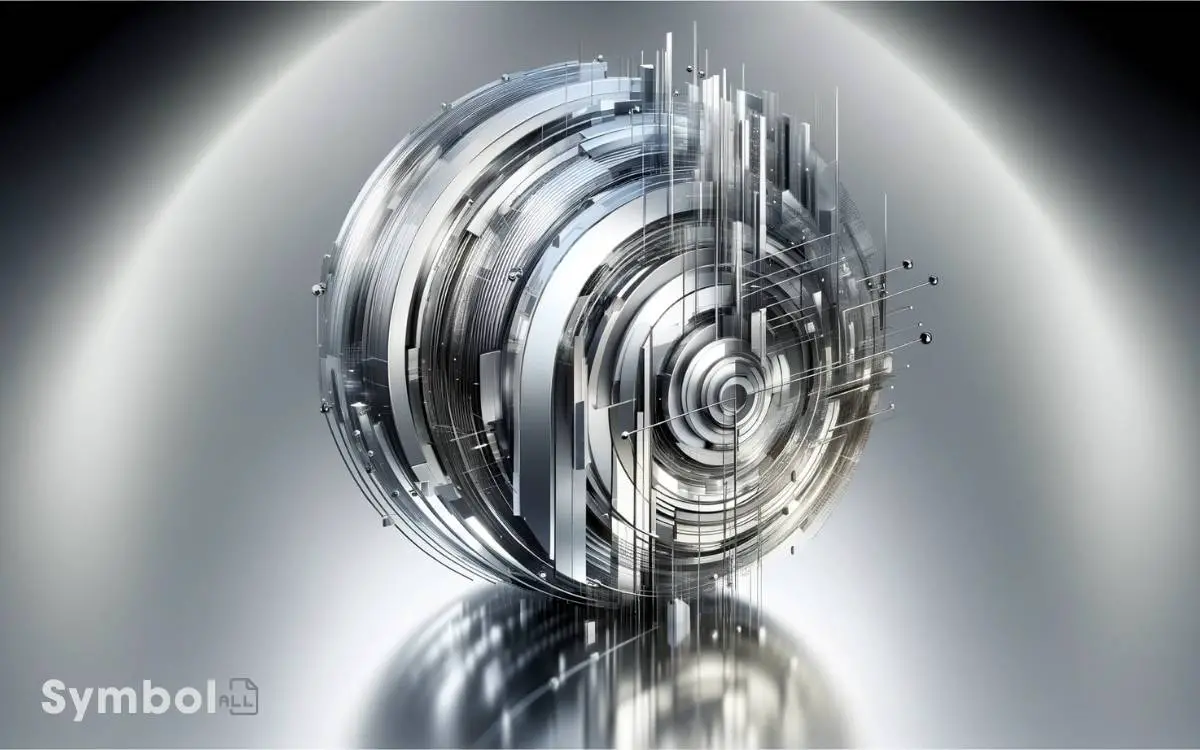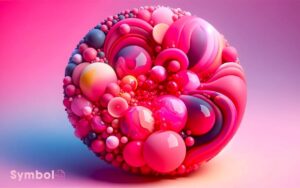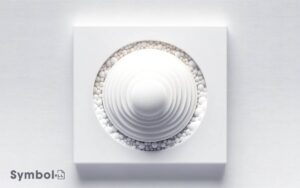What Does the Color Silver Symbolize? Purity!
Silver symbolizes more than its shining surface. It stands for purity, connecting you with the divine, and embodies feminine energy across cultures.
In religious practices, its brightness makes it a favored offering to gods. Silver represents wealth and prosperity, reflecting societal values.
Its relation to the moon highlights mysticism and a deep tie to the subconscious, suggesting emotional stability, innovation, and a look towards the future.
This color fosters a sense of calm, balance, and self-awareness. It also signals technological progress, playing a pivotal role in advancements. Curiosity might lead you to uncover how its unique attributes impact both culture and technology.

Key Takeaway
Moon and Mysticism
Silver’s association with the moon embodies a deep connection to mysticism and the ethereal, reflecting the celestial body’s influence on human beliefs and rituals.
You’ll find that throughout history, cultures have revered the moon, attributing to it powers of fertility, growth, and renewal.
Consequently, silver, mirroring the moon’s luster, has been imbued with similar symbolic meanings.
It’s not just a color or a metal; it represents a bridge to the unseen, a conduit for tapping into the subconscious and the mysteries that lie beyond our ordinary perception.
In rituals and symbolism, silver objects are often used to represent purity, clarity, and the reflective journey of the soul.
This intrinsic link between silver, the moon, and mysticism underscores a universal human tendency to seek connection with the cosmos, guiding you toward introspection and enlightenment.
Wealth and Prestige
Beyond its mystical allure, silver also symbolizes wealth and prestige, reflecting society’s long-standing valuation of this precious metal as a marker of economic and social status.
Historically, silver has been a standard for currency, signifying not just wealth but also trust in its value across different cultures.
| Aspect | Significance |
|---|---|
| Jewelry | Symbol of affluence |
| Decorative Items | Indicator of high status |
| Currency | Historical measure of wealth |
In your analysis, consider how silver’s inherent characteristics—its luster, rarity, and durability—have contributed to its association with wealth. Its ability to mirror the highest standards of living and signify economic stability is unmatched.
This connection between silver and prestige is not arbitrary but rooted deeply in human history and psychology, underscoring its continued relevance in symbolizing wealth and social standing.
Technological Progress
In the domain of technological innovation, silver plays a pivotal role, thanks to its unparalleled electrical conductivity, thermal conductivity, and reflectivity. This metallic hue not only symbolizes but actively contributes to the advancement of technology.
Here’s how:
- Electrical Conductivity: Silver’s exceptional ability to conduct electricity makes it indispensable in creating efficient and reliable electronic devices, from smartphones to satellites.
- Thermal Conductivity: Its superior thermal properties guarantee that devices can dissipate heat effectively, prolonging their lifespan and enhancing performance.
- Reflectivity: Silver coatings are vital in solar panels and telescopes, maximizing energy capture and improving observational capabilities.
Understanding silver’s role illuminates its symbolism in technological progress—representing not just the future but the mechanisms that drive us towards it.
Modern Elegance
You recognize silver’s role in symbolizing modern elegance through its timeless design appeal and luxury aesthetic connotations.
It’s not just about the visual impact; silver’s application in design speaks to a broader cultural appreciation for sophistication and enduring value.
This color’s integration into various elements, from fashion to technology, underscores its ability to convey opulence and a forward-thinking mindset.
Timeless Design Appeal
Silver’s integration into modern design transcends mere aesthetics, offering a timeless appeal that harmonizes with both contemporary and classic styles.
This adaptability is rooted in its inherent qualities, which lend themselves to various design contexts without losing relevance or appeal.
Here are three key aspects that underscore silver’s timeless design appeal:
- Versatility: Silver effortlessly complements a wide range of materials and colors, making it a go-to choice for designers seeking to create a cohesive look.
- Subtlety: Its understated elegance guarantees that silver can be integrated into design elements without overwhelming the senses.
- Durability: Beyond its visual appeal, silver’s resilience makes it suitable for both decorative and functional applications, ensuring its presence in design remains both beautiful and practical over time.
Luxury Aesthetic Connotations
Building on its timeless design appeal, silver also embodies a modern elegance that’s synonymous with luxury and sophistication in contemporary aesthetics.
Its reflective quality not only adds depth and dimension but also conveys a sense of futurism and high-end sophistication.
When you incorporate silver into design elements, you’re not just choosing a color; you’re opting for an aesthetic that communicates wealth, innovation, and forward-thinking.
This is why you’ll often find silver in the branding of luxury cars, high-tech gadgets, and premium fashion labels. It’s a color that doesn’t just stand out; it stands for something more—a marker of exclusivity and elite status.
Silver’s ability to blend with minimalistic themes further amplifies its appeal, making it a staple in modern luxury design.
Psychological Implications
You’ll find that silver’s psychological implications span emotional stability, reflection, and a connection to innovation and futurism. Its shimmering presence often fosters a sense of calm and balance, reflecting an inner peace and a forward-thinking mindset.
This color’s association with technological advancement and futuristic concepts underscores its role in inspiring creativity and innovation.
Emotional Stability Reflection
Reflecting upon the color silver reveals its profound capability to embody emotional stability, offering a mirror to one’s psychological state.
Its symbolism serves as a serene backdrop against the tumult of emotions, promoting a sense of calm and balance. When you encounter silver, it’s not just a color but a psychological anchor. It bridges the gap between the tangible and the ethereal, offering a reflective quality that invites introspection. While silver exudes a peaceful energy, the symbolism of the color bronze introduces a grounding contrast, embodying resilience and earthly strength. Together, these hues create a harmonious interplay, enriching the emotional and psychological landscape they inhabit.
Here are three ways silver impacts emotional stability:
- Calming Influence: Silver’s luminous quality has a soothing effect, reducing stress and fostering a peaceful mental environment.
- Balance and Harmony: It encourages emotional equilibrium, helping you to maintain a level-headed approach in varied situations.
- Reflective Nature: Silver prompts introspection and self-awareness, guiding you towards understanding your emotions and reactions better.
Innovation and Futurism Connection
Delving further into the color silver, we discover its significant role in symbolizing innovation and futurism, impacting our psychological perception of the future.
Silver’s sleek and metallic essence often mirrors our visions of a technologically advanced world, filled with innovation and progress.
This association isn’t just superficial; it deeply influences how you perceive and interact with technology and futuristic concepts.
When you see silver used in product design, from smartphones to cars, it subconsciously signals cutting-edge technology and forward-thinking.
It’s this visual cue that prepares your mind to accept and embrace new advancements, making silver not just a color but a symbol of the new and the next.
Fundamentally, silver shapes your expectations and excitement for future innovations, embedding a sense of curiosity and openness towards what’s yet to come.
Cultural Significance
Throughout history, silver has held profound cultural significance across various civilizations, symbolizing wealth, spirituality, and innovation.
Here are three key aspects that illustrate its importance:
- Wealth and Status: In many societies, silver has been a marker of wealth and high social status. Owning silver artifacts or jewelry was often a privilege of the elite, reflecting not just material wealth but also social prestige.
- Spiritual and Ritualistic Roles: Silver’s lustrous quality made it a symbol of purity and connection to the divine in numerous cultures. It was commonly used in religious ceremonies and as offerings to gods.
- Technological Advancements: Beyond its aesthetic and symbolic value, silver’s unique properties have made it instrumental in technological innovations, further cementing its cultural significance through its practical applications.
Conclusion
In sum, you’ve journeyed through the multifaceted symbolism of silver, from its mystical moon ties to its embodiment of wealth, technological advancement, and modern elegance.
This color’s psychological and cultural impacts are profound, weaving a tapestry that’s both ancient and avant-garde.
Remember, every time you behold silver, you’re not just seeing a color; you’re peering into a mirror reflecting centuries of human progress and dreams.
It’s akin to holding a piece of the future in the palm of your hand, an anachronism that bridges eras.






